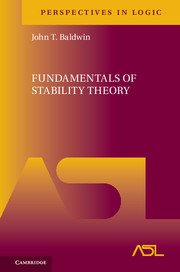Part A - Independence
Published online by Cambridge University Press: 31 March 2017
Summary
As we remarked in the introduction, to arrive at our structure theory we must develop the notions of independence and generation separately. Part A is devoted to the first of those tasks, Part B to the second. We begin by giving an axiomatic description of an independence or freeness relation. This description summarizes the properties of the nonforking relation just as the axioms of Whitney and van der Waerden summarize the properties of vector space independence. We adopt this axiomatic formulation for several reasons. First, it clarifies the principles applied in the various constructions and proofs later in the book. Second, it provides a general framework for the discussion of several of the main concepts of the book, notably nonforking and orthogonality. By allowing us to separate the arguments used to verify these axioms from the applications of the axioms, we take a step towards the generalization of this structure theory to other families of classes of structures. If is the family of classes of models of first order theories, we show in Section III.4 and Chapter VII, that all the axioms are satisfied on a class only if the relation is nonforking and K is the class of models of a stable first order theory. However, some of the results proved here depend on proper subsets of the axioms listed and many of the axioms hold under less restrictive conditions ([Shelah 1980a], [Shelah 1986]). More importantly, many of the arguments from Shelah's extension of the theory to the nonelementary case [Shelah 1983a] can also be fit into this rubric. A unified account of the first order and infinitary case will undoubtedly require changes in the axioms proposed here; we regard this as simply a first step.
- Type
- Chapter
- Information
- Fundamentals of Stability Theory , pp. 33 - 34Publisher: Cambridge University PressPrint publication year: 2017

